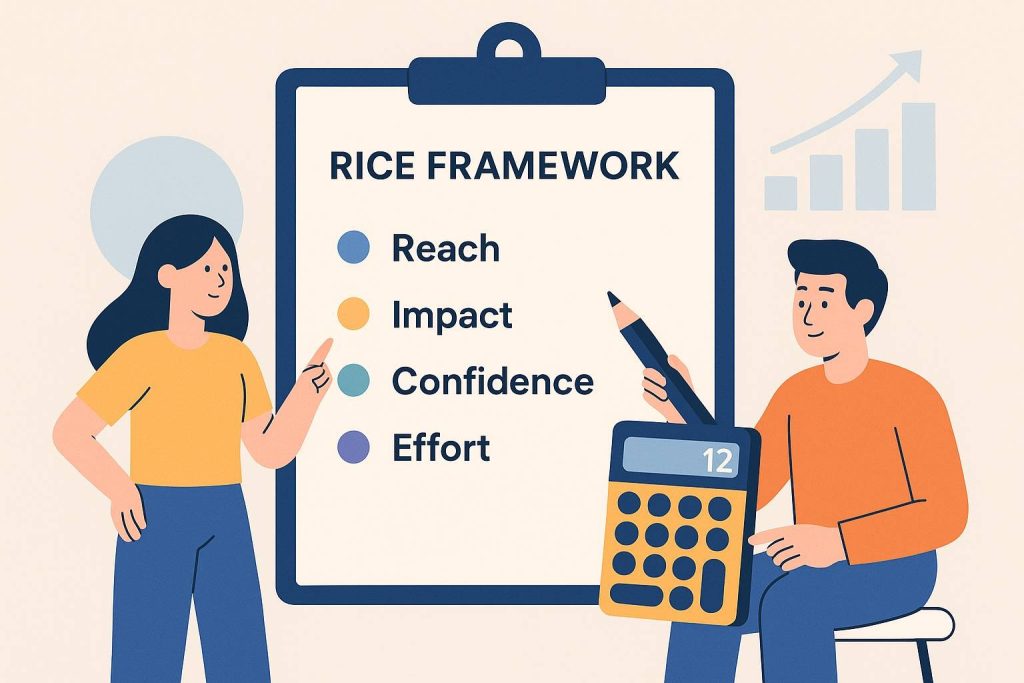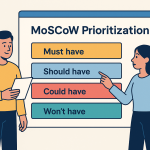What is the RICE Scoring Model for Prioritization?
Every product team eventually confronts the same question: with limited time and resources, which ideas should we pursue, and which should we set aside? The RICE scoring model is a powerful compass for navigating this decision-making terrain. Designed to bring clarity, structure, and objectivity to the complex prioritization process, RICE empowers product managers to evaluate competing initiatives through a calculated, repeatable lens.
RICE stands for Reach, Impact, Confidence, and Effort—four dimensions that, when combined, yield a numerical score for each project. This score acts as a north star, illuminating which ideas offer the greatest return on investment relative to the effort required.
Adopting RICE as a framework offers more than just numerical rankings. It encourages thoughtful debate, minimizes the sway of personal bias, and provides a transparent rationale that can be shared across teams and up to executives. In high-stakes environments where product decisions carry strategic weight, RICE transforms intuition into insight and opinion into measurable value.
What’s the History of the RICE Scoring Model?
The RICE model wasn’t born in a vacuum but forged in the fires of practical necessity. Intercom, the messaging software company known for its thoughtful approach to product design, developed the RICE scoring method to address a recurring internal challenge: how to fairly evaluate an ever-growing list of diverse product ideas, each championed by different stakeholders.
Despite being aware of various existing prioritization models, the Intercom product team found that many fell short in practice. They often felt too rigid or ambiguous or failed to address the unique needs of their evolving roadmap. So, the team went back to the drawing board.
They created a model that could flexibly apply to a broad spectrum of projects, whether launching a significant new feature or optimizing a backend process. By quantifying each initiative’s potential benefits and costs through a simple but elegant formula, Intercom’s team was able to bring a sense of order to the chaos. This method didn’t just help them make decisions; it gave them a way to defend those decisions, backed by data and logic rather than gut feelings or hierarchy.
The elegance of the RICE framework lies in its adaptability. Today, it’s used by startups and enterprise teams alike—proof that a good idea, when rooted in real-world experience, tends to spread.
How Does the RICE Scoring Model Work?
At its heart, the RICE model is a straightforward yet powerful tool for prioritizing projects by weighing four key factors: Reach, Impact, Confidence, and Effort. Instead of relying on gut feelings or endless debates, this approach gives you a clear, structured way to assess what’s worth tackling first. Each of these components acts like a lens, helping you see a project’s potential from different angles. Together, they produce a score that’s not just a number, but a practical guide for making smarter decisions.
Reach
Reach answers a simple but crucial question: How many people will this initiative affect within a defined timeframe?
Unlike some models that blur definitions, RICE encourages you to tailor the meaning of “reach” to your context. For a SaaS company, it might mean the number of users who see a new onboarding flow within a month. For an e-commerce site, it could represent the number of customers who interact with a revamped checkout process in a quarter.
What makes reach powerful is its grounding in tangible metrics. Let’s say you’re considering a new feature and estimate that 1,200 visitors will land on the page in the next month, with roughly 30% likely to engage with it. Your reach score would be 360—a quantifiable figure that gives you a baseline from which to assess overall value.
Reach focuses your thinking on scale. Even if an idea sounds exciting, if it’s only going to benefit a small subset of users, it may not be the best place to invest your efforts right now.
Impact
If reach is about scale, then impact is about depth. It addresses the question: To what degree will this initiative move the needle for our users or our business?
Unlike reach, which can often be measured with precision, impact leans more into estimation and judgment. It’s about anticipating user behavior, emotional response, and business outcomes. Will this feature improve retention? Will it increase conversions? Will it delight users enough to drive organic word-of-mouth?
To avoid analysis paralysis, Intercom defined a straightforward five-point scale:
- 3 = Massive impact
- 2 = High impact
- 1 = Medium impact
- 0.5 = Low impact
- 0.25 = Minimal impact
This structure enables quick comparisons between projects. For example, adding a feature that significantly improves the user experience for all paying customers might score a 2, while tweaking the color scheme of a button might warrant a 0.25.
Though subjective, the impact score invites valuable team discussions. It encourages cross-functional stakeholders to weigh in on what truly matters—user value, business outcomes, and strategic alignment.
Confidence
Every roadmap includes a degree of uncertainty. That’s where confidence occurs, functioning as a reality check on the other components. It asks: How sure are we about our estimates for reach and impact?
Let’s say your team is bullish on a feature’s potential reach and impact, but the data backing those estimates is thin. Maybe it’s based on assumptions or anecdotal feedback. Your confidence score allows you to temper optimism with realism.
Intercom simplifies this part of the model by assigning confidence levels to discrete percentages:
- 100% = High confidence
- 80% = Medium confidence
- 50% = Low confidence
Anything below 50% is a moonshot, a speculative bet that may not warrant prioritization, at least not without more research.
By accounting for confidence, RICE ensures that projects backed by strong evidence are weighted more heavily than those riding on hunches. It doesn’t stifle innovation, but it helps teams invest wisely.
Effort
While reach, impact, and confidence feed the numerator in the RICE formula, effort sits alone in the denominator. This structure reinforces a fundamental truth: great ideas are only as valuable as their feasibility.
Effort measures the total cost of implementation, typically expressed in “person-months.” That includes time from developers, designers, QA testers, and anyone else involved in bringing the initiative to life.
For example, a small UI tweak might require only 0.5 person-months, while a full-scale redesign could take 6 months of combined team effort. This clarity helps product teams avoid overcommitting to disproportionately resource-intensive ideas relative to their potential payoff.
Think of effort as the balancing force. A project with high reach and impact but extreme effort may not score as well as a more modest initiative that’s quick to ship. This trade-off is what makes RICE such a practical tool for real-world planning.
Start Prioritizing your Roadmap.
When ideas are swirling, opinions are clashing, and deadlines are looming, the RICE scoring model offers a moment of clarity. It brings structure to creative chaos and gives product managers the confidence to say, “Here’s why we’re prioritizing this—and here’s the data to back it up.”
Used effectively, RICE becomes more than a formula. It’s a conversation starter, a tool for alignment, and a framework for continuous improvement. It encourages teams to think beyond excitement and gut instinct and instead focus on tangible value and thoughtful trade-offs.
More importantly, it doesn’t require perfection. Your estimates will improve over time, and so will your team’s intuition about what works. RICE simply gives you a way to move forward with intention, even when the future is uncertain.
Conclusion
In the high-stakes world of product development, where time is precious and ideas abound, the RICE scoring model stands out as a practical, adaptable, and deeply human tool for prioritization. By breaking down each initiative into reach, impact, confidence, and effort, teams gain a more holistic view of their roadmap—and a shared language for making tough decisions.
If your organization has struggled with other prioritization methods or is seeking a more data-informed, democratic way to allocate resources, RICE might just be the framework you’ve been looking for. It doesn’t promise certainty, but it offers clarity—and in product management, that’s often the next best thing.

